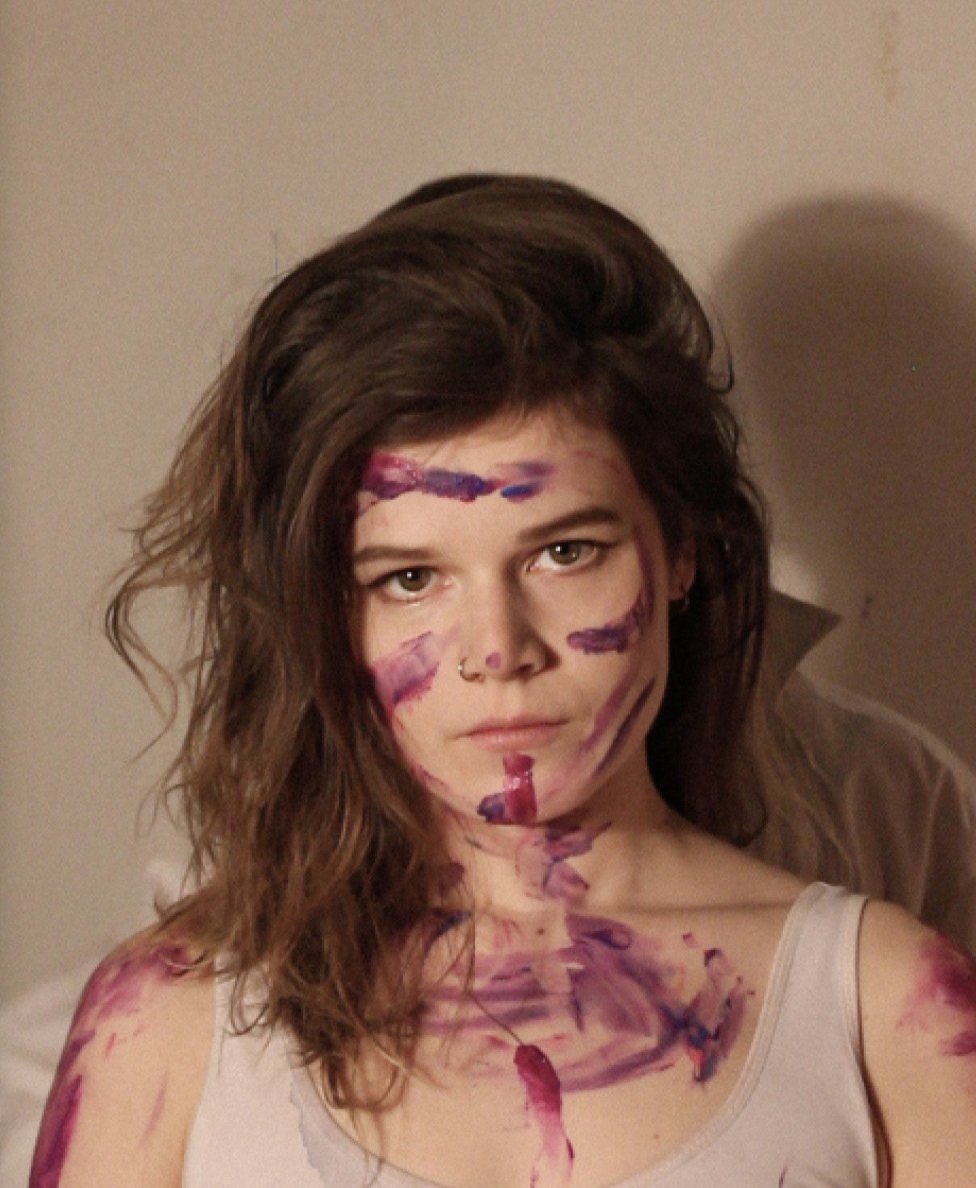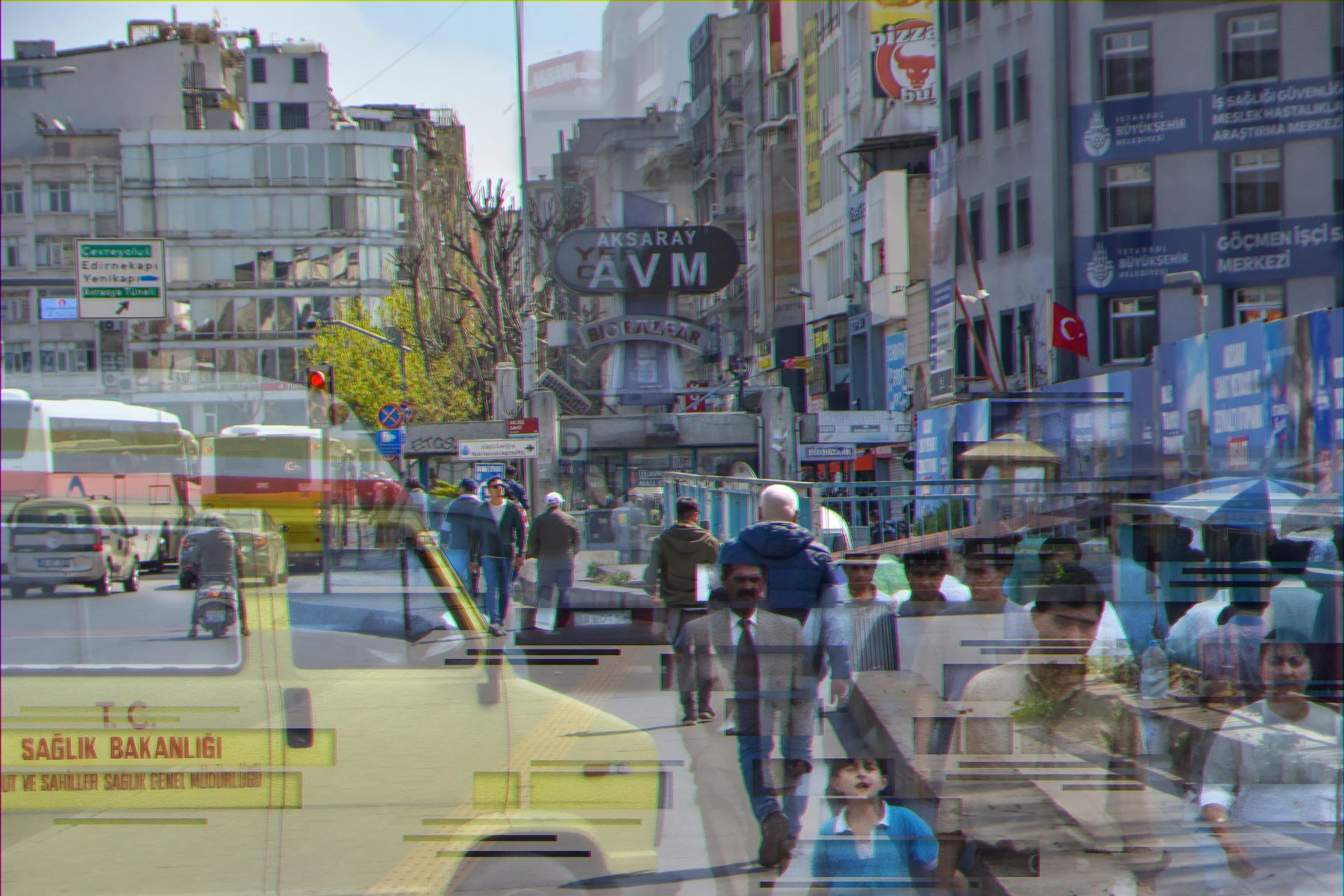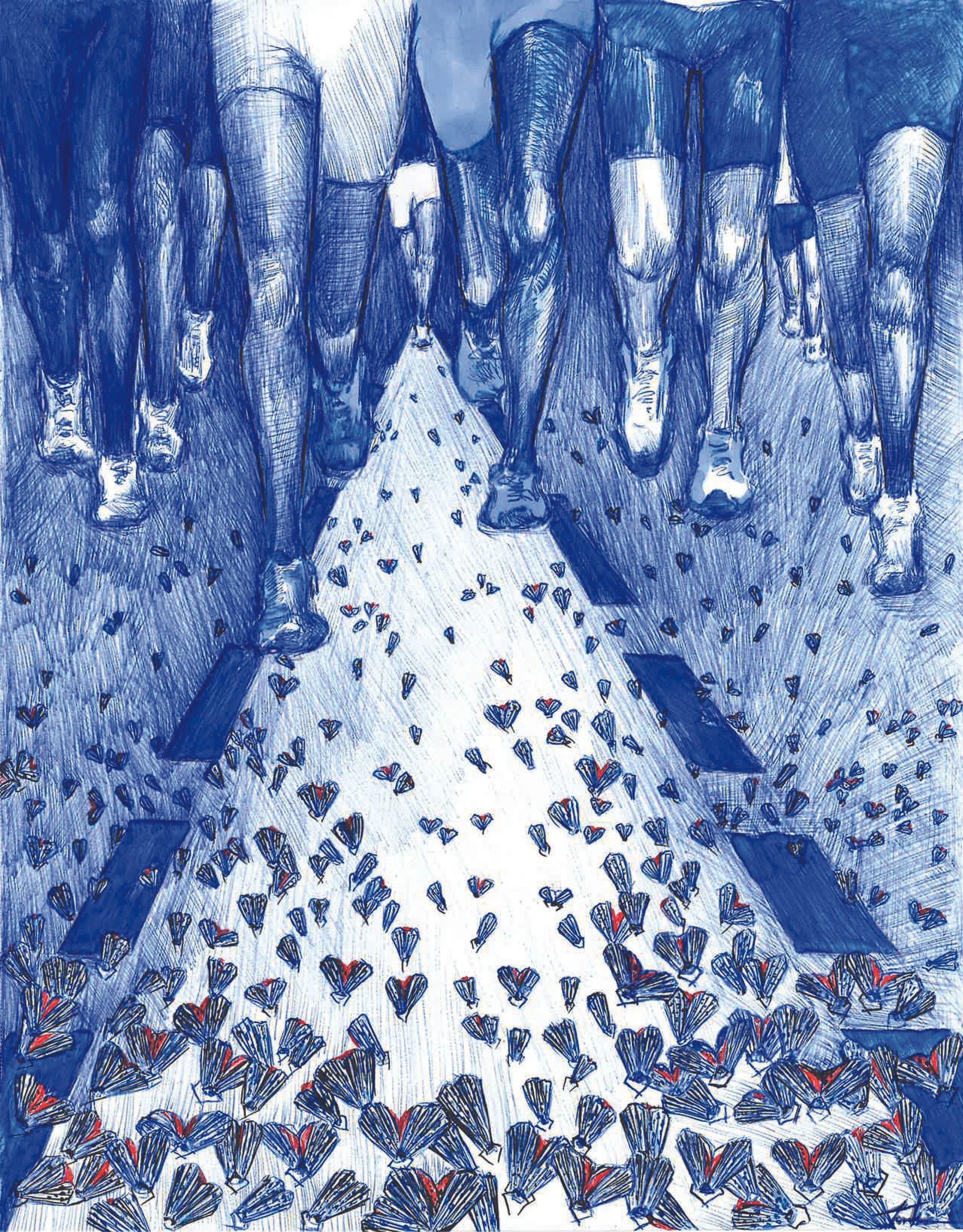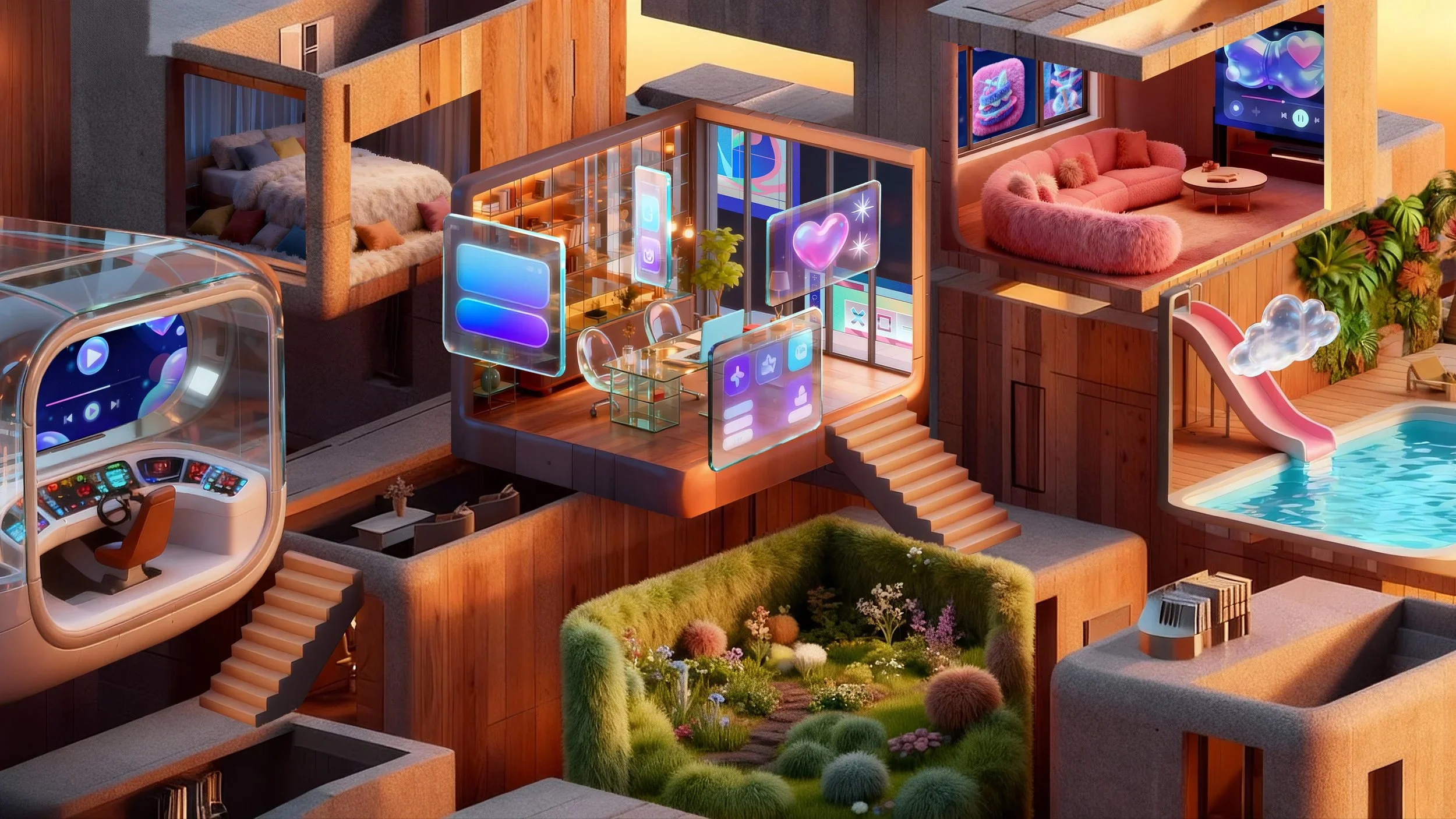10 Questions with Klara Lenhard
Klara Lenhard is a German filmmaker and graphic designer now based in Berlin. She is originally from Frankfurt (*2001). She works in mixed media, including video and sound design, photography, and inclusive design. Klara also engages in experimental arts with a focus on conceptual, emotional design. She has been curiously exploring how art makes disconnections tangible. She holds that art can paradoxically foster new connections by pointing out the disconnections. In 2023, her works were exhibited in the Museum for Contemporary Arts in Freiburg and on the
premises of the Schopf2 Art Association, where she was also an artist in residency in the same year. She also took part in several productions at the Freiburg City Theater in the 2022/23 season. Since then, she has spent most of her time in her studio and does visual concepts for live performances with musicians. She experiments with the concept of change and liquids because they, like us, never stay the same.
Klara Lenhard - Portrait
ARTIST STATEMENT
Klara Lenhard is an artist who defines the essence of her works through visual art and working with mixed media. Klara is keeping something to herself whilst openly expressing something she is keeping to herself. Klara works with the concept of change and reflects and visualises contemporary political events through art.
Crossword, Mixed Media, 2024 © Klara Lenhard
INTERVIEW
Let's start from the basics. Who are you and how did you first get interested in art?
My name is Klara, and I'm a mixed-media artist. We are surrounded by art. And by other things. For me, making art is not a decision because regardless of what I do, it's alive. I don't go to the art, but the art comes to me. A tree can look like an old woman to me. It's when realities are blurring and I feel this emotional overwhelm.
Your journey began in Frankfurt, and you are now based in Berlin. How have these cities influenced your creative process and artistic perspective?
Big cities are absurd and inspiring. Although Frankfurt is smaller than Berlin, it is no less absurd. These cities have definitely influenced my creative process and artistic perspective because I am open to them. It is part of my creative process to process the sensory inputs of my surroundings. In big cities, this often comes with overwhelming noises and harsh clashes between so-called "social classes". The frequency and intensity of clashes - but also of peaceful diversity - show up in obvious and nuanced ways in my art.
Contradictions, photography, 2023 © Klara Lenhard
Contradictions, photography, 2023 © Klara Lenhard
Your 2023 residency at the Schopf2 Art Association and your Freiburg Museum of Contemporary Arts exhibitions were significant milestones in your career. What were the most formative experiences or lessons during these projects?
The question very aptly points toward one insight; artists are not just seen as mere artists, but as (more or less) creative people who also have to earn and justify their place in a capitalist society. I appreciate the opportunities I've had mainly because they have allowed me to pursue or rather explore art. But can there be more creative opportunities without justifying why certain "milestones" point toward a promising career in art? How does one draw attention to one's creative work without reducing it to yet another product on the market?
Another insight is just how revealing an exhibition can be. How much can I reveal about myself in an exhibition with a personal theme without making it a striptease of my soul? Questions like this deserve intentional answers, even if they may not be final.
You work across multiple mediums, such as video, sound design, photography, and inclusive design. How do you decide which medium best suits a particular concept or project?
I like working with multiple mediums because they allow me to be open with this decision - and therefore to delay the "final choice". The medium depends on why I do the project and on what I want to bring across. In this way, the artistic concept determines the artistic medium - and the other way around. So there's on enjoyable paradox.
I work with mixed mediums because it comes with flexibility; I can decide which medium best suits the project and even combine multiple ones depending on the flow of the process. This adaptive approach allows me to capture some importantthings that otherwise might have been lost along the way. In the case of doubt I leave the question open to not risk losing the truth. I appreciate abbott mixed mediums and interdisciplinary art in particular that different aspects and experiences are not artificially separated from each other. Art can focus on uniting rather than dividing.
To me, "inclusive design" is intersectional and overlaps with all mediums. Inclusivity and accessibility are importantbecause it is an inherent part of art to make the intangible tangible. What is my art worth if many people are excluded from experiencing this process because they do not see or hear or are too small/large? I'm not suggesting absolute inclusivity can exist, but the way I see art means that A) people and B) art deserves to be experienced by various people in various ways. It's just part of my creative commitment.
You describe your work as exploring "conceptual emotional design" and disconnections that paradoxically foster new connections. Can you elaborate on what draws you to this theme and how it manifests in your art?
Philosophical questions that I ask myself and that life asks me often draw me to this theme. Sometimes, we can makebetter sense of "oppositions" when we see them together, not apart. An element of search is a chore essential in all of my work. The theme manifests in my art, for example, in the project "Can I See You." It consists of 16 portraits of people I met on Tinder. The portraits themselves do not say what I have to say, but they convey a sense of openness that leaves others wondering how the photo came to be. What happened before? When people ask and answer these questions, they feel emotions and - indirectly - connect with a person whose path thus far hadn't crossed with their own.
The Lack of, photography, 2024 © Klara Lenhard
The Lack of, photography, 2024 © Klara Lenhard
The Lack of, photography, 2024 © Klara Lenhard
The Lack of, photography, 2024 © Klara Lenhard
The concept of change and liquids is central to your work. What inspired you to explore this theme, and how do you visually or conceptually translate these ideas into your art?
I explore this theme because change happens, and we cannot escape time. Liquids literally and metaphorically convey parts of this theme because they always change and - like us - never stay the same. That's why liquids feel more like a "natural" artistic choice rather than an act of translation to me. Humans are made from liquid (and some other stuff). And whilst I perhaps can't "create" liquids in a strict sense, I can be creative with them. I could never recreate my experiments with liquids. I don't perceive that as a restriction - quite the opposite, actually. Art leads to invisible responses to our lives. Everything flows. In my art, I hide what I want to say. I want to overpower people in feeling like thought. "You'll never look at yourself in the same puddle twice".
You mentioned that art can reflect contemporary political events. How do you approach this in your projects, and what role do you believe artists play in addressing such issues?
Art, politics and activism are interrelated to me. Art can create safe spaces to explore labour, pain, and hardship from the perspectives of those who are underappreciated in our society. At the same time, loneliness amongst the wealthy is also an intriguing theme. I want my art to contribute to sustainability and social justice movements.
I don't expect art to address political events in terms of solving all political issues. What I do expect is for my art to document the diverse ways in which the "system" is failing us. There are endless ways of showing the variety and scope of this failure, which is telling about the system but also about creative potential.
You have collaborated with the Freiburg City Theater and created visual concepts for live performances with musicians. How does working in a live, collaborative environment differ from creating art in your studio?
Besides the very obvious differences, I only collaborate with people that let me do what I value in art. So it is quite possible that lots of what people see in collaborative projects has originated in my own studio. Something unique about live, collaborative environments is the space for spontaneous attunement; I get to react to what I hear while musicians get to react to what they see.
Scrutinize, photography, 2024 © Klara Lenhard
Scrutinize, photography, 2024 © Klara Lenhard
Experimental art often involves pushing boundaries and experimenting with different approaches. Can you share a particularly challenging or experimental project and what you learned from it?
I think all art is experimental and associated with risk because it can fail. Art is experimental simply because it is art. I learned that one should definitely wear a mask when experimenting with toxic liquids. On a more profound level, I learned that people are often more lonely than I thought. When I met with strangers on Tinder, I needed to push my ownworries aside to really be present and to enable a sensitive collaboration based on trust. Prioritising this was not always easy, but I learned that it is possible. I also learned that by prioritising trust and mutual respect, when I photograph a naked person, I am naked myself. There has to be a balance in everyone's openness—a balance in intimacy for a balance in trust.
What themes or mediums are you excited to explore in your future projects, and do you have any upcoming exhibitions or collaborations you'd like to share?
"The lack of" is an upcoming exhibition in Freiburg which starts in March. The title is the theme; "if there's a lack of something, there is not enough of it, or it doesn't exist at all." Currently, performances are still in the making, and there will be collaborations with musicians in the summer. I'll release details on my social media in January. In the future, I look forward to exploring video and sound design, altering envelope curves, and developing a language from a specific human sound in line with the theme of change.
Artist’s Talk
Al-Tiba9 Interviews is a promotional platform for artists to articulate their vision and engage them with our diverse readership through a published art dialogue. The artists are interviewed by Mohamed Benhadj, the founder & curator of Al-Tiba9, to highlight their artistic careers and introduce them to the international contemporary art scene across our vast network of museums, galleries, art professionals, art dealers, collectors, and art lovers across the globe.

























